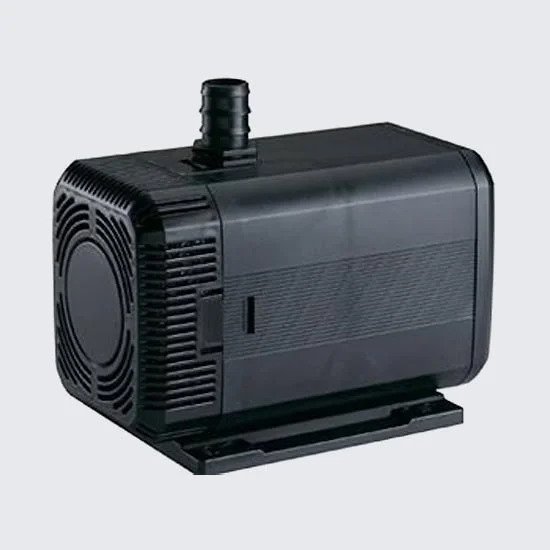Water features have become increasingly popular additions to outdoor spaces, transforming ordinary gardens into captivating landscapes. These installations create peaceful retreats where homeowners can escape daily stress while enjoying the soothing sounds of flowing water. The visual appeal of dancing water patterns adds movement and interest to otherwise static garden designs. Most people don't realize that behind every beautiful water display lies a crucial mechanical component working tirelessly, the pump.
A garden fountain pump serves as the heart of any successful water feature installation, driving the circulation that creates those mesmerizing displays. These specialized devices move water from reservoirs through various nozzle configurations, producing everything from gentle bubbling effects to dramatic spray patterns. Without reliable pump systems, even the most elaborate fountain designs would remain lifeless decorative elements. The pump's consistent operation ensures that water features maintain their intended visual impact throughout the seasons.
Understanding Water Circulation Fundamentals
Basic Pump Mechanics: Water feature pumps operate on straightforward principles that have remained consistent for decades. The motor drives an impeller that creates suction, drawing water from the reservoir and pushing it through connected tubing or piping systems. This continuous cycle prevents water stagnation while creating the movement necessary for attractive displays. The process requires careful balance between flow rates and available water volume to maintain optimal performance.
System Components Integration: Successful water features depend on several interconnected elements working together harmoniously. Pumps must coordinate with filtration systems, UV clarifiers, and various fountain heads to create cohesive displays. Each component affects overall system performance, making proper sizing and compatibility essential for long-term success. Professional installers often spend considerable time matching pump specifications with other system requirements.
Selecting Appropriate Pump Specifications
Flow Rate Calculations: Determining correct gallons per hour ratings requires careful consideration of feature size and desired water effects. Smaller garden fountains typically need pumps producing 100-400 GPH, while larger installations may require 1000+ GPH for adequate circulation. Underpowered pumps create disappointing displays, while oversized units waste energy and may overwhelm delicate fountain components. Many homeowners struggle with these calculations without professional guidance.
Head Height Considerations: The vertical distance water must travel significantly affects pump performance and selection criteria. Higher fountain displays require pumps with greater head pressure capabilities to maintain consistent flow rates at elevated discharge points. Standard calculations suggest reducing flow capacity by approximately 10% for every foot of vertical lift required. This factor often surprises first-time water feature installers who underestimate its importance.
Installation Requirements and Best Practices
Electrical Safety Measures: Water and electricity combinations demand strict adherence to safety protocols during installation and ongoing maintenance procedures. All pump installations require GFCI protection and proper grounding to prevent dangerous electrical situations around water features. Underground wiring must meet local codes with appropriate conduit protection and burial depths. These safety considerations should never be compromised to save installation costs.
Placement Optimization Strategies: Pump positioning affects both performance and maintenance accessibility in significant ways throughout the system's operational life. Submersible units need stable platforms that prevent sediment intake while allowing easy removal for cleaning or repairs. External pumps require weather protection and sound dampening to minimize operational noise that might disturb neighbors. Strategic placement decisions made during installation pay dividends for years afterward.
Maintenance Protocols for Longevity
Regular maintenance schedules help water feature pumps deliver reliable performance while avoiding costly emergency repairs or premature replacements. Most systems benefit from monthly inspections and seasonal deep cleaning procedures that remove accumulated debris and mineral deposits.
Key maintenance tasks include:
- Impeller cleaning - Remove algae buildup and debris that reduces efficiency
- Intake screening - Clear blocked suction areas that strain motor components
- Seal inspection - Check for leaks that indicate wear requiring attention
- Electrical connections - Verify secure, corrosion-free power supply contacts
Seasonal Preparation Requirements: Climate changes demand specific preparation steps to protect pump investments during extreme weather conditions. Winter preparations include complete drainage, component removal, and protected storage in regions experiencing freezing temperatures. Spring startup procedures involve thorough system inspections, fresh water filling, and gradual operational testing. These seasonal transitions often reveal maintenance needs that developed during dormant periods.
Troubleshooting Common Performance Issues
Reduced Flow Diagnosis: Declining water flow typically indicates developing problems that require prompt attention before complete system failure occurs. Clogged intake screens, worn impeller components, or partially blocked discharge lines commonly contribute to performance reduction. Systematic troubleshooting helps identify root causes rather than simply treating symptoms that will likely recur. Early intervention prevents minor issues from becoming major repair expenses.
Noise and Vibration Solutions: Unusual operational sounds often signal internal wear or improper installation conditions that need correction. Bearing wear, loose mounting hardware, or inadequate sound dampening frequently cause neighborhood complaints about water feature noise levels. Addressing these issues promptly maintains good relationships with neighbors while preventing further mechanical damage. Some problems require professional diagnosis to avoid costly mistakes during repair attempts.
Conclusion
Garden water feature pumps represent essential investments in outdoor living spaces that provide years of enjoyment when properly selected and maintained. These devices transform static garden elements into dynamic focal points that enhance property values while creating peaceful retreats for relaxation and entertainment. Regular maintenance and prompt attention to developing issues ensure reliable operation throughout extended service lives. Take time to research pump specifications carefully and consult with experienced professionals when planning your water feature installation to achieve the best possible results for your outdoor space.
 Online Clock
Online Clock